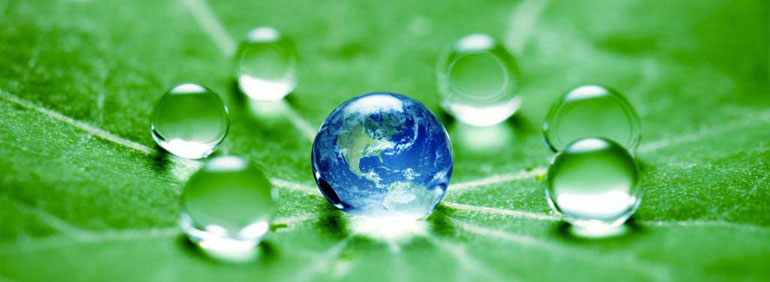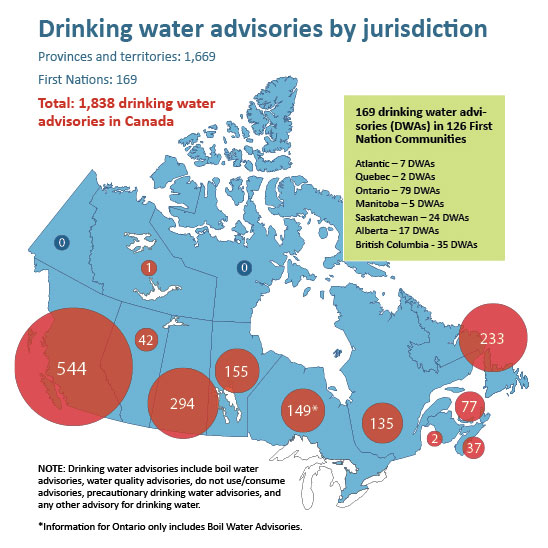The Great Leaks: Water Use and Scarcity in Canada

By Scott Thornton, Managing Director, Tetra Pak Canada
Canada has one-fifth of the world’s fresh water, points out World Wildlife Fund Canada—and the third largest supply after Brazil and Russia, notes the United Nations’ Food and Agriculture Organization. Yet that is only 7% of the world’s renewable fresh water supply, and “the perception that Canada is blessed with an abundance of freshwater has led to misuse and abuse of the resource,” says Environment Canada (EC).
Related GLOBE-Net articles
Can incentives protect Canada’s clean water?
We must do a better job at managing our water – UN Report
Don’t drink the water – Thousands in Canada can’t drink their water
In fact, such bounty has led to a problematic system of water use in Canada. The Conference Board of Canada finds that out of 16 peer countries, Canada ranks 15th in water withdrawals and earns a “C” grade for usage that is nearly double the average of all of these countries. Only the U.S. fares worse, earning last place and a “D.”
Part of the problem is that Canadians pay much less for their water compared with their peers, according to EC figures, averaging 31 cents per cubic metre while many others pay two-to-five times that rate. Germans pay the most at $2.16, notes EC. However, in general, a review of water use in Canada highlights some difficult realities, points out EC. These include:
- 84% of the population lives in a narrow southern band, while 60% of the water supply flows north to the Arctic Circle;
- Most Canadians live in rapidly growing metropolitan areas, a lifestyle which further stretches limited water supplies; and
- Increasing surface and groundwater pollution is further reducing readily available clean water supplies.
Unless Canadians start consuming less, we may face a water shortage. Yet by global standards, Canada remains lucky.
Water Scarcity Is Widespread
At least 2.5 billion people—more than a third of the world’s population—live in water-stressed areas and lack access to clean water or live without adequate sanitation, according to water-based charity WaterAid. Further, water demand is expected to exceed supply by 40% by 2030, predicts Alan Hinchman, chief operating officer at Watercura and a former global market director of infrastructure at GE Intelligent Platforms, one of the world’s leading suppliers of sustainable water and process systems solutions.
Municipal water loss in North America ranges between 20-50%, notes Hinchman. “For every 1,000 gallons of water we use, somewhere between 250 to 1000 more [gallons] were lost by leaking pipes,” he points out. This helps explain why North Americans have one of the largest water footprints in the world, almost 8,000 litres per day. Not surprisingly, Hinchman also predicts “North America has a huge water infrastructure bill coming due.”
Because industrial app lications account for most of Canada’s water use, per the Conference Board, food and beverage companies can do their part by minimizing the use of this natural resource. Three strategies are recommended to address this:
- Carefully manage supply chains. Most companies’ directwater use pales in comparison to their virtualwater use—the water required to produce every aspect of a product from start to finish. For example, it takes 112, 300 and 400 litres of water, respectively, to produce just 2 slices of toast, 2 strips of bacon and 2 eggs, notes Stephen Leahy, award-winning Canadian author of “Your Water Footprint” and sustainable-business writer for The Guardian. In truth, the supply chain is a primary focus of water stewardship activity for companies.
 BlackBerry took steps toward measuring the environmental impact of its supply chain bysurveying suppliers to determine their use of energy and water resources. The survey found that more than 41% of suppliers already had a water strategy in place, boding well for BlackBerry’s efforts to advance the environmental profile of its products.
BlackBerry took steps toward measuring the environmental impact of its supply chain bysurveying suppliers to determine their use of energy and water resources. The survey found that more than 41% of suppliers already had a water strategy in place, boding well for BlackBerry’s efforts to advance the environmental profile of its products.
- Increase water recycling and reuse. Manage water quality through responsible wastewater collection, treatment, recycling and disposal. Innovators such as Vancouver-based start-up Axine Technologies, recently profiled in Forbes, are already findingways to recycle industrial wastewater by removing embedded pollutants. This reduces their likelihood of entering water sources and minimizes the demand on potable water supplies.
- Identify and eliminate sources of waste. In 2009, Toronto-based Sanofi Pasteur, Canada’s largest producer of vaccines, formed an Energy Task Force to identify water and energy consumption draws on its sprawling Connaught Campus, according to the Ontario Water Works Association (OWWA). The company set an ambitious goal of reducing water usage by 25% before 2020 and quickly implemented techniques to reuse and recycle water—and succeeded in reducing consumption by 150,000 cubic metres, or 11%, in just two years. Sanofi’s efforts won it the 2013 Award of Excellence for Water Efficiency from OWWA.
Scott Thornton is a managing director for Canada for Tetra Pak, which has developed an environmental benchmarking service to identify sources of water waste. His leadership focus includes advancing innovation and customer service excellence with an emphasis on product quality and sustainability in Canada.
This article printed courtesy of Tetra Pak, is the world’s leading food processing and packaging solutions company. Further insights are available at DoingWhatsGood.ca.








